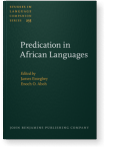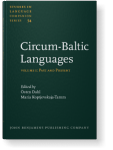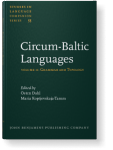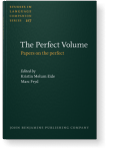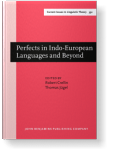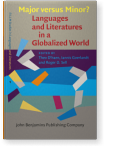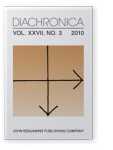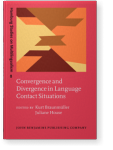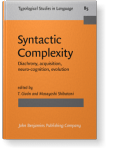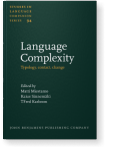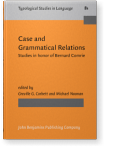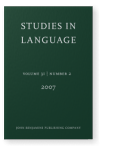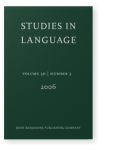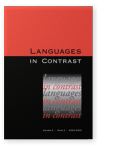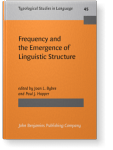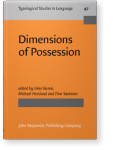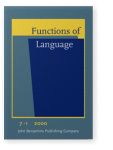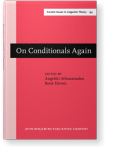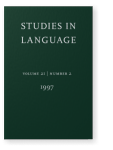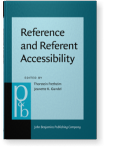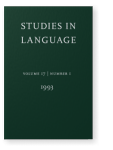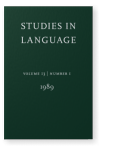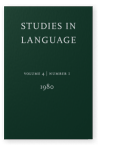Östen Dahl
List of John Benjamins publications for which Östen Dahl plays a role.
Book series
The Growth and Maintenance of Linguistic Complexity
Östen Dahl
[Studies in Language Companion Series, 71] 2004. x, 333 pp.
Subjects Morphology | Semantics | Syntax | Theoretical linguistics
Circum-Baltic Languages: Volume 1: Past and Present
Edited by Östen Dahl and Maria Koptjevskaja-Tamm
[Studies in Language Companion Series, 54] 2001. xx, 382 pp.
Subjects Sociolinguistics and Dialectology | Typology
Circum-Baltic Languages: Volume 2: Grammar and Typology
Edited by Östen Dahl and Maria Koptjevskaja-Tamm
[Studies in Language Companion Series, 55] 2001. xx, 423 pp.
Subjects Historical linguistics | Typology
Circum-Baltic Languages: 2 Volumes (set)
Edited by Östen Dahl and Maria Koptjevskaja-Tamm
[Studies in Language Companion Series, 54-55] 2001. xx, 382 pp. & xx, 423 pp.
Subjects Sociolinguistics and Dialectology | Typology
2021 Chapter 2. “Universal” readings of perfects and iamitives in typological perspective The Perfect Volume: Papers on the perfect, Eide, Kristin Melum and Marc Fryd (eds.), pp. 43–64 | Chapter
In Dahl & Wälchli (2016), we investigate the relationship between perfects and iamitives – i.e. items whose semantics combines features of perfects and words like already – using statistical techniques on data from a multilingual parallel corpus of Bible texts. This paper looks at the same… read more
2020 Chapter 19. Indo-European perfects in typological perspective Perfects in Indo-European Languages and Beyond, Crellin, Robert and Thomas Jügel (eds.), pp. 635–668 | Chapter
This chapter looks at Indo-European perfects in the light of recent typological research on TAME (tense-aspect-mood-evidentiality), in particular the work done at the Department of Linguistics at Stockholm University with the help of massive parallel corpora. The chapter starts with a survey of… read more
2015 The “Minor Language” Perspective Major versus Minor? – Languages and Literatures in a Globalized World, D’haen, Theo, Iannis Goerlandt and Roger D. Sell (eds.), pp. 15–24 | Article
2010 Review of Allen (2008): Genitives in early English: Typology and evidence Diachronica 27:3, pp. 489–496 | Review
2009 Increases in complexity as a result of language contact Convergence and Divergence in Language Contact Situations, Braunmüller, Kurt and Juliane House (eds.), pp. 41–52 | Article
The paper discusses the possibility of partially or entirely new linguistic patterns developing in a contact situation and how this influences the complexity of the language system, in particular the grammar. In earlier work, I have argued that such linguistic complexity often arises out of the… read more
2009 Two pathways of grammatical evolution Syntactic Complexity: Diachrony, acquisition, neuro-cognition, evolution, Givón, T. and Masayoshi Shibatani (eds.), pp. 239–248 | Article
Givon has suggested three stages that characterize the diachronic rise of complex constructions: Parataxis, Syntaxis and Lexis. In this paper, it is argued that rather than having three distinct stages of grammatical evolution with a linear increase of tightness, we have to postulate different… read more
2008 Grammatical resources and linguistic complexity: Sirionó as a language without NP coordination Language Complexity: Typology, contact, change, Miestamo, Matti, Kaius Sinnemäki and Fred Karlsson (eds.), pp. 153–163 | Article
The paper discusses the relationship between cross-linguistic differences in grammatical resources and linguistic complexity. It is claimed that Sirionó (Tupí-Guaraní) lacks syntactic coordination as in English John and Mary are asleep. Instead, Sirionó employs a number of different strategies –… read more
2008 The degenerative dative of Southern Norrbothnian Case and Grammatical Relations: Studies in honor of Bernard Comrie, Corbett, Greville G. and Michael Noonan (eds.), pp. 105–126 | Article
In some northern Swedish vernaculars, one can find some rather peculiar developments in the use of inflectional forms of nouns. Thus, in the vernaculars Pitemål and Rånemål, spoken in the province of Norrbotten, no less than three kinds of forms compete for the territory taken up by indefinite… read more
2007 Review of Hawkins (2004): Efficiency and Complexity in Grammars Studies in Language 31:2, pp. 485–497 | Review
2004 Review of Dixon & Aikhenvald (2002): Word: A Crosslinguistic Typology Languages in Contrast 4:2, pp. 328–332 | Review
2001 The origin of the Scandinavian languages Circum-Baltic Languages: Volume 1: Past and Present, Dahl, Östen and Maria Koptjevskaja-Tamm (eds.), pp. 215–235 | Chapter
2001 Inflationary effects in language and elsewhere Frequency and the Emergence of Linguistic Structure, Bybee, Joan L. and Paul J. Hopper (eds.), pp. 471–480 | Article
2001 The Circum-Baltic Languages: Introduction to the volume Circum-Baltic Languages: Volume 2: Grammar and Typology, Dahl, Östen and Maria Koptjevskaja-Tamm (eds.), pp. xv–xx | Miscellaneous
2001 The Circum-Baltic Languages: Introduction to the volume Circum-Baltic Languages: Volume 1: Past and Present, Dahl, Östen and Maria Koptjevskaja-Tamm (eds.), pp. xv–xx | Chapter
2001 11. Kinship in grammar Dimensions of Possession, Baron, Irène, Michael Herslund and Finn Sørensen (eds.), pp. 201–226 | Chapter
2000 Egophoricity in discourse and syntax Functions of Language 7:1, pp. 37–77 | Article
1997 The relation between past time reference and counterfactuality: a new look On Conditionals Again, Athanasiadou, Angeliki and René Dirven † (eds.), pp. 97–114 | Article
1997 Review of Klein (1994): Time in Language Studies in Language 21:2, pp. 417–428 | Review
1996 Animacy in Grammar and Discourse Reference and Referent Accessibility, Fretheim, Thorstein and Jeanette K. Gundel (eds.), pp. 47–64 | Article
1993 Review of Singler (1990): Pidgin and Creole Tense-Mood-Aspect Systems Studies in Language 17:1, pp. 251–258 | Review
1989 The Creation of Tense and Aspect Systems in the Languages of the World Studies in Language 13:1, pp. 51–103 | Article
